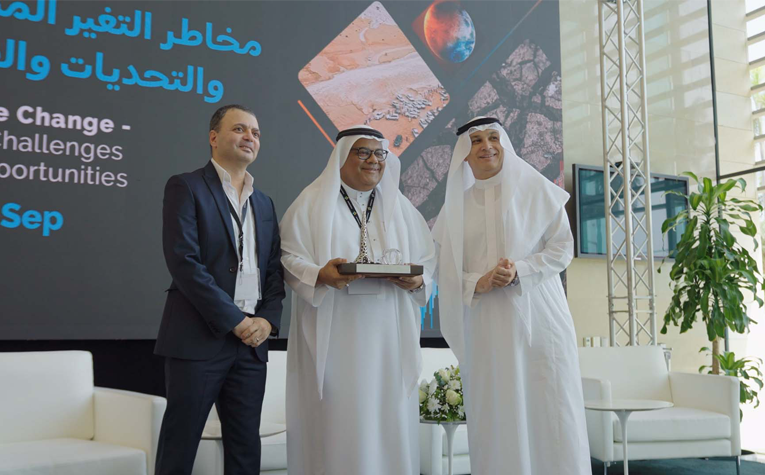
14 August, 2023
Saudi Arabia’s National Center for Meteorology has teamed up with KAUST to establish the Climate Change Center, an initiative that aims to enhance the Kingdom’s ability to plan for the future, improve its environmental performance and strengthen its role and commitment to regional and global action against climate change.
The Center is funded by a $26 million grant from Saudi Arabia’s Ministry of Environment, Water and Agriculture (MEWA). It is currently in the process of generating high-resolution climate-related information at seasonal and decade scales that will support national and regional resource management by policymakers.
“High-resolution climate-related information at seasonal and decade scales that will support national and regional resource management by policymakers.”
“This new Center needed to be in a location dedicated to research,” says Ayman Gulam, CEO of the National Center for Meteorology. “We chose KAUST because it attracts experts from all over the world, including in the area of climate change, and because of the facilities and technologies it has available to conduct this research.”
“Our region is unique in terms of its weather and conditions,” adds Center director, KAUST’s Ibrahim Hoteit. “Global climate projections, like rainfall, are not well-resolved on regional levels. The idea is to make our own climate projections; homemade in Saudi Arabia.”

Saudi Arabia’s National Center for Meteorology and KAUST join forces to establish the Climate Change Research Center. The Center is actively generating high-resolution climate data to inform policymakers for effective resource management at national and regional levels. From left: Director of the Climate Change Research Center Ibrahim Hoteit, CEO of the National Center for Meteorology Ayman Gulam and Associate Director of the Climate Change Research Center Yasser Abualnaja. ©KAUST 2023
MEWA will install a supercomputer cluster that will be used in conjunction with KAUST’s Shaheen supercomputer to run numerical models that will generate and analyze huge amounts of data to provide climate projections, as well as subseasonal and seasonal climate forecasts.
“KAUST is investing in a new supercomputer in 2023,” adds Hoteit. “With this new power, we will be able to do 10 times what we can do now. Together with the new supercomputer cluster, the Climate Change Center will accomplish what was not before possible in the region.”
“With the new supercomputer cluster, the Climate Change Center will accomplish what was not before possible in the region.”
The scientists will use these supercomputers to input historical and current climate-related data and satellite information into models that use algorithms to simulate climate dynamics in the Arabian Peninsula and show how it all links to global climate phenomena. “The National Center for Meteorology has climate data that extends back to 1950, and it will be made available to the Climate Change Center,” says Ghulam.
The models developed at KAUST will use this information to forecast what might happen in the coming weeks, months, seasons, years and decades in terms of rainfall, heatwaves and sea level rise, among other climate events.
Hoteit stresses, however, that “We must be very careful about interpreting projections. The input is approximate by its nature and very coarse at the global level. The idea is to improve on what is already being done and on the information that is available, and to train researchers to understand what the numbers actually mean.”
To achieve this, Hoteit and his colleagues will build on more than a decade’s worth of KAUST expertise on climate modeling and regional climate dynamics to make sure that their models replicate the story told by the data. “If the model reproduces the data, we have confidence that we can use it to help explain what is going on,” he says. “We can assess the validity of climate projections by understanding what happened historically, how the regional climate functions and the large-scale climate dynamics. We then revise our model based on that information.”
The Center is collaborating with world-renowned institutions around the globe: the US National Center for Atmospheric Research, the International Research Institute for Climate and Society at Columbia University, Scripps Institution of Oceanography, the University of Arizona and the University of Cambridge. “We’ll be drawing on the expertise of these and other international institutions, which are the best in the world when it comes to climate data and research,” says Hoteit.
Read more at KAUST Insight.